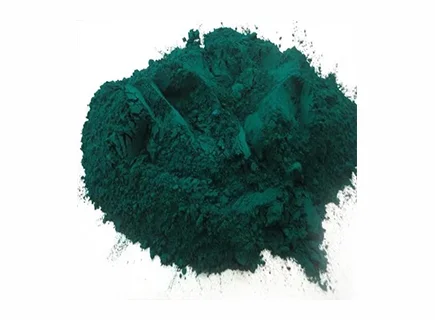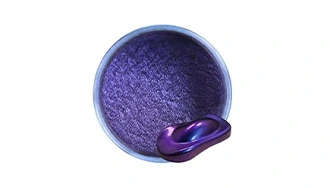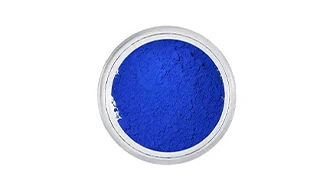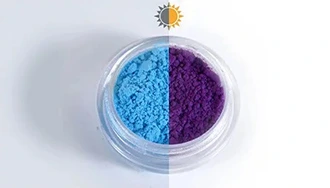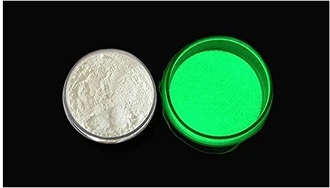Titanium Powder
Titanium Powder is an important chemical pigment that is made mostly from titanium. There are two ways to make this pigment: through the sulfuric acid method or the chlorination method. KingChroma titanium powder is used in many different industries like coatings, ink, papermaking, plastic rubber, chemical fibers, and ceramics.
Home > Powdered Pigments > Metal Pigment > Titanium Powder
Titanium Dioxide Pigment Product Detail
KingChroma Ti powder performance characteristics:
KingChroma titanium dioxide pigment is eco-friendly and can easily break down without harming the environment. It is also secure, steady, and sustainable, which makes it an excellent option for those seeking superior pigments that meet modern society’s requirements.
Shipping & Returns
Return Policy:
kingchroma has a 10 day 100% satisfaction guaranteed return policy upon receipt of goods, which means you have 10 days to request a return after receiving the item. But the return freight shall be borne by the buyer. In order to be eligible for a return, your item must be in the same condition as the item you received, unworn or unused, labeled, and in its original packaging. You will also need a receipt or proof of purchase. For more details, please review our Return policy.
If you have any questions about returns, you can contact us at [email protected].
Shipping:
Please give us 1-2 days to process the implementation. Delivery usually takes 7-15 days. Please review our shipping policy.
Hot Color Powder Products
Titanium Dioxide Pigment Uses

Titanium Dioxide in Cosmetics

Titanium Powder for 3D Printing
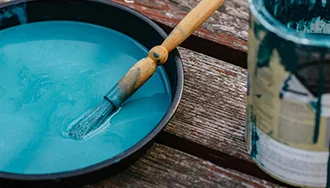
Paint With Titanium Dioxide

Titanium Dioxide Concrete Pigment

Automotive Coatings

Titanium Dioxide Ink Pigment

Ceramics
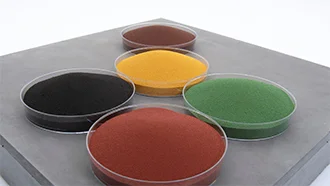
Inorganic Pigments
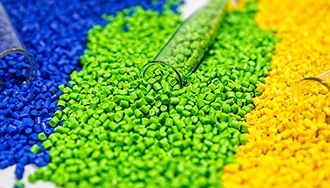
Plastics

Medical Devices
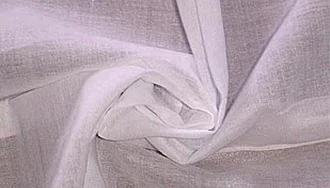
Textiles
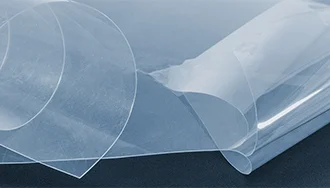
Plastic Films
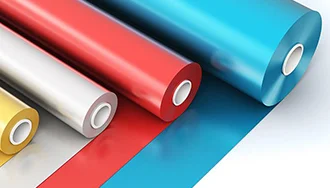
Paper
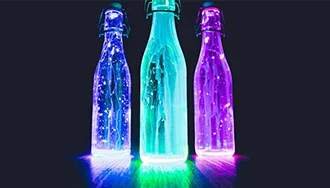
Glass

Food Contact Materials
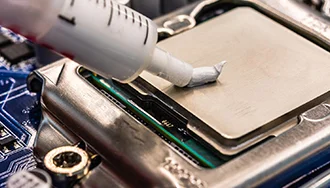
Electronics
Ti Powder FAQs
Is titanium dioxide in cosmetics use Safe?
Titanium dioxide in cosmetics use is common because it’s safer than lead white. Most fragrance powders use titanium dioxide pigment instead of lead white or zinc white. By adding only 5% – 8% tio2 pigment to the fragrance powder, it provides a permanent white color that improves the fragrance’s smoothness, adhesion, absorption, and coverage. In cold cream and powder form, titanium pigment reduces the greasy sensation and adds transparency. This pigment can also be utilized in sunscreen, spices, soap, toothpaste, and white soap.
Cosmetic titanium pigment comes in two types: oily or water-based. It’s popular in the beauty world because it’s chemically stable, has a high refractive index, and provides excellent hiding power and whiteness without being toxic. Its stunning brightening effects have made it an essential element for cosmetic manufacturers.
Titanium dioxide in Cosmetics Performance characteristics:
1. High brightness and excellent coverage.
2. Hydrophilic and oleophilic products fix common problems like titanium pigment dispersal and precipitation issues in their respective dispersion systems. This improves its dispersibility and anti-precipitation properties resulting in a more stable and satisfying end product.
3. Excellent durability against harsh weather conditions.
4. Works well with other cosmetic ingredients.
Is titanium dioxide pigment toxic?
Titanium pigment is safe and not harmful. It is made of titanate and without harmful substances like lead and cadmium. This makes it safe for people and the environment.
Is titanium powder used in organic products?
Titanium powder has various applications in organic synthesis research, including photocatalysis, electrocatalysis, and asymmetric catalysis. Its use enhances the reaction rate and selectivity of organic compounds, as well as enables the synthesis of organic compounds in an asymmetric manner. Thus, it provides crucial tools for organic synthesis research. It is important to distinguish these applications from the utilization of titanium powder in coatings.
Is titanium dioxide pigment affected by UV radiation?
Titanium dioxide pigment has high light reflection and scattering properties due to its molecules. This means that it can reflect and scatter ultraviolet rays, providing a certain degree of protection. As a result, titanium dioxide pigment is often used in cosmetics and daily necessities as an anti-ultraviolet agent.
It’s important to note that not all titanium pigments have UV resistance. When using titanium dioxide pigment, we should select a high-quality and well-specified product to achieve the desired UV protection.
Is titanium dioxide paint pigment used in oil-based paints?
Titanium dioxide paint pigment can improve the quality of oil-based paints, boasting good whiteness and covering power, making it an excellent raw material for paints and ink. Both rutile-type and anatase-type titanium pigments are suitable for this application.
Is titanium powder used in food packaging?
Titanium powder has wide usage in the food industry owing to its high whiteness and safety performance. It can be added to candies, desserts, dairy products, seasonings, and other food products. Two primary approaches are prevalent in the food industry to use titanium powder: direct addition to food products and addition to food packaging materials while packaging.
Is titanium dioxide powder safe?
Titanium dioxide powder is a white pigment that is safe for daily use, as it is non-toxic and harmless to the human body.
Inhaling excessive amounts of titanium pigment dust may lead to respiratory diseases such as bronchitis and emphysema.
Furthermore, titanium pigment can cause eye and skin irritation and corrosion, therefore, it is crucial to take personal protective measures during its operation and use.
Is titanium powder affected by temperature?
Titanium powder goes through a high-temperature kiln during its manufacturing process. The anatase-type titanium powder is typically fired at a temperature of 800-900 ℃, while rutile-type titanium pigment is fired at a higher temperature of 900-1200 ℃. Despite this, the white pigment itself is resistant to high temperatures. However, after post-processing, inorganic coating agents such as alumina, silicon oxide, or zirconia, and organic treatment such as TMP or TME, may impact the high-temperature resistance of titanium pigment.
Is titanium powder used in watercolor paints?
Titanium powder has multiple uses, including regulating color in watercolor pigments. It is essential to modify white color to enhance hue saturation and brightness, resulting in visually appealing watercolor pigments.
Can titanium dioxide pigment be mixed with other pigments?
Using titanium dioxide pigment offers a notable advantage as it does not chemically react with other pigments. This allows it to combine with other pigments, thus resulting in brighter, more vibrant colors. Additionally, combining titanium dioxide pigment with other pigments can produce varying appearances based on the specific industry.
Do titanium dioxide products expire or go bad?
The shelf life of titanium dioxide products is typically 24 months. It is advisable not to use titanium powder once it has expired.
How to store titanium powder?
1. Avoid storage in damp environments:
If titanium dioxide products are exposed to a humid environment for an extended period, the powder pigment is prone to absorbing moisture, which significantly reduces its effectiveness. It is crucial to seal the packaging and store it in a dry, ventilated, and cool place to prevent moisture absorption and maintain the quality and performance of the pigment.
2. Avoid prolonged exposure to the sun:
Titanium powder belongs to the category of fine chemicals and contains metallic elements. If exposed to the air for an extended period, the pigment is likely to undergo chemical reactions with moisture or oxygen in the air, which can significantly affect its performance.
3. Avoid mixing with other organic substances:
It is essential to avoid mixing titanium powder with other organic substances to prevent any chemical reactions that may affect its effectiveness. This is similar to the second point, which highlights the importance of preventing reactions between products with different chemical properties. A good storage method for titanium pigment is to use labels with different pigment numbers for different purposes.
Is Ti powder used in ceramics?
Ti powder, with the scientific name TiO2, has many unique properties that make it widely used in various industries. The ceramic industry is an important user of titanium pigment due to its high purity, uniform particle size, high refractive index, excellent high-temperature resistance, high opacity, thin coating, and lightweight characteristics. These properties make it an ideal material for use in ceramics and other related materials that require high-quality pigments.
Is tio2 pigment used in fabric softeners or laundry detergents?
Yes, the chemical fiber industry is another important application field for tio2 pigment. Fiber-grade titanium dioxide, a type of titanium pigment, is primarily used in the spinning of chemical fibers. This type of pigment has relatively high requirements.
We are Ready to Support Your Titanium Powder Projects


